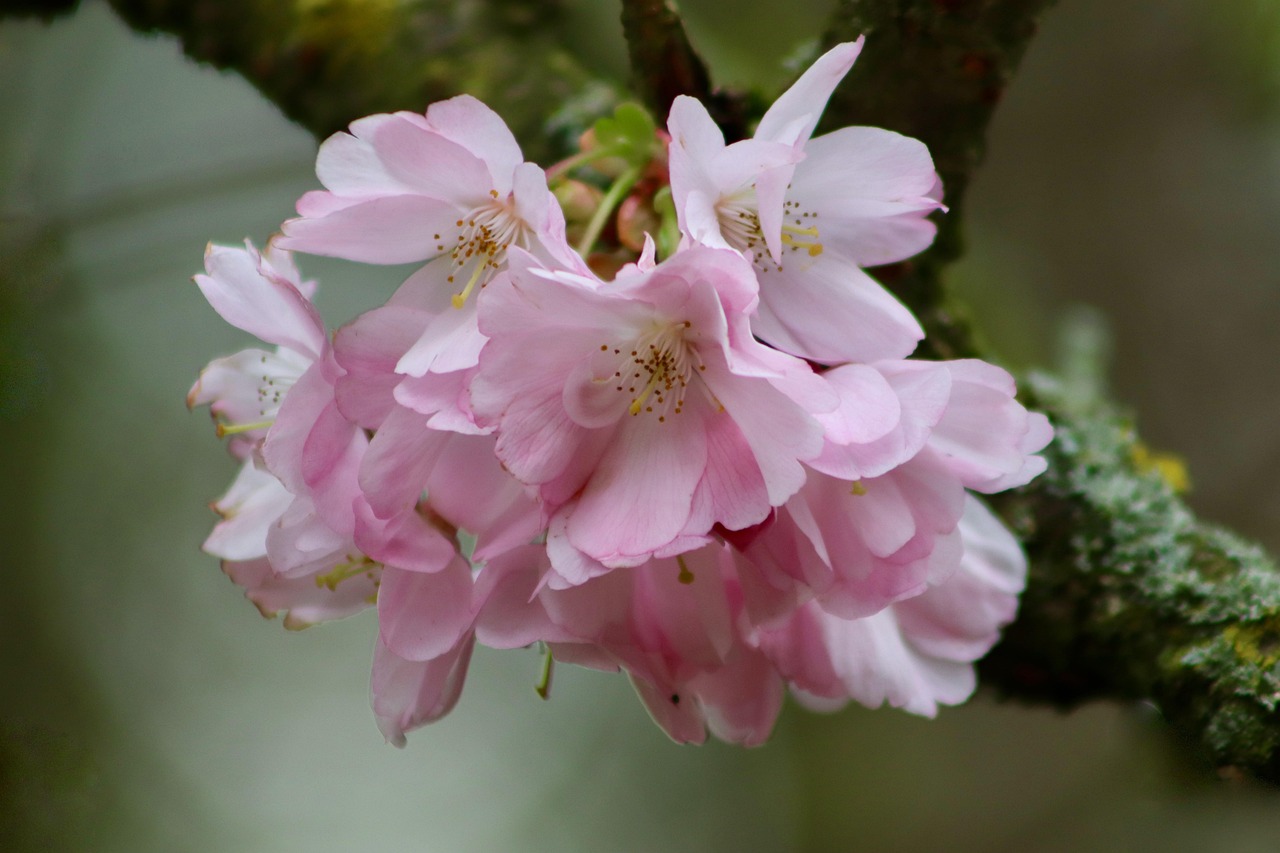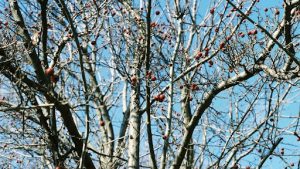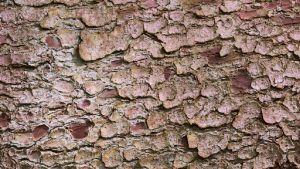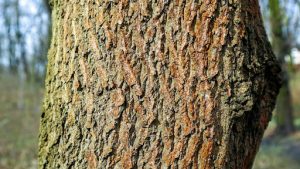Bark Splitting on Cherry Trees: Causes and Fixes

- September 16, 2025
- By Michael Woods
I’ve been noticing some concerning splits in the bark of my cherry trees lately, and it got me thinking about why this happens and what I can do about it. It seems like bark splitting on cherry tree varieties is a common issue, but understanding the causes can help in figuring out the best way to help them heal and prevent future problems. I’ve done some digging to find out what might be going on and how I can best care for my trees.
Key Takeaways
- Bark splitting on cherry trees can stem from several factors, including environmental stress like frost and sunscald, soil and moisture issues, mechanical damage, and even pests or diseases.
- Frost cracks often appear on the south or east sides of the trunk after cold nights, caused by rapid temperature changes from sun exposure.
- Planting trees too deeply or mechanical damage from mowers and string trimmers can also lead to bark issues and stress the tree.
- Diseases like bacterial canker can cause gummosis, a sticky sap ooze, often entering through existing wounds.
- While some splitting is natural as trees grow, severe damage or signs of disease may require intervention, but healthy trees are generally more resilient.
What Bark Splitting Looks Like
When I first noticed something was off with my cherry tree, it was the bark. It wasn’t just a little crack; in some spots, it looked like the bark was actually peeling away from the trunk, almost like sunburned skin. It can be pretty alarming to see, especially if you’re not expecting it.
I’ve learned that bark splitting on cherry trees can show up in a few different ways. Sometimes, it’s a long, vertical split, running up and down the trunk. Other times, it might be more of a horizontal crack, or even just sections of bark that start to lift or peel away. You might also notice a gummy substance oozing from the cracks, or perhaps a darkened, crusty area around the split. This could be a sign of something like canker, which is a fungal issue that likes to take advantage of trees that are already stressed.
It’s important to get a good look at the damage. I try to check the entire trunk, from the base all the way up as far as I can see.
Here’s a quick rundown of what to look for:
- Vertical Splits: These are often the most noticeable, running up and down the trunk.
- Horizontal Cracks: Less common, but they can appear.
- Peeling or Lifting Bark: Sections of bark that are no longer firmly attached to the trunk.
- Oozing Sap or Gummy Substance: This can indicate disease or insect activity.
- Discoloration or Crusting: Darkened or rough patches around the split.
The severity of the split is a key indicator of the tree’s overall health. If the split is small and the bark is still mostly attached, the tree might be able to handle it on its own. However, if large sections of bark are loose or missing, or if the split goes very deep, it’s a more serious concern. I remember seeing one tree where the bark was so bad, it was practically hanging off, and the split went more than halfway around the trunk. While that particular tree kept going for years, it’s a good reminder that significant damage needs attention. If more than half of the tree’s canopy looks dead or unhealthy, it might be time to call in a professional arborist for a proper diagnosis.
It’s easy to panic when you see bark splitting, but it’s helpful to remember that some splitting can be a natural part of a cherry tree’s growth. The key is to observe the extent of the damage and look for other signs of distress.
Key Environmental Triggers
I’ve noticed that cherry trees, especially those with thinner bark, can be quite sensitive to changes in the weather. One of the most common culprits for bark splitting I’ve seen is related to winter conditions. When we have a cold night, followed by a sunny morning, the bark on the south and east sides of the tree can warm up quickly.
This rapid warming causes the bark to expand. If the temperature then drops again, or if the bark is already weakened, it can split. This is often called a “frost crack” or “sunscald.” It’s like a sunburn for the bark, really. You might see a long, vertical split, and sometimes the bark can even peel away.
Here’s a breakdown of how these environmental factors can affect your cherry tree:
- Winter Cold: Extreme drops in temperature can make the bark brittle and more prone to cracking.
- Sunscald: Direct sunlight on the bark during winter, especially on the south-facing side, can cause rapid warming and subsequent damage when temperatures fluctuate.
- Frost Cracks: These are splits that occur due to the freezing and thawing cycle. Water can get into small cracks, freeze, expand, and widen the split.
I’ve found that young trees or trees planted in exposed locations seem to be more susceptible. It’s a natural process for trees to grow and expand, but these environmental stresses can exacerbate the issue, leading to those unsightly splits.
It’s important to remember that while these splits can look alarming, cherry trees often have a natural ability to heal themselves over time, forming a callus over the wound. However, addressing the underlying cause can help prevent further damage and promote better healing.
Soil, Moisture & Nutrient Stress Factors
Sometimes, the issues with cherry tree bark aren’t about the weather or pests, but about what’s happening underground or with the tree’s overall health. I’ve noticed that trees struggling with their roots, or those not getting enough of the right food, can show bark problems.
Think about it: if a tree is planted too deeply, or if the soil is constantly waterlogged, the roots can’t breathe properly. This kind of stress makes the whole tree weaker, and the bark can start to split as a result. It’s like us feeling run down when we don’t eat well or get enough sleep – the tree just can’t keep itself in top shape.
Here are a few things I look out for:
- Improper Planting Depth: If the spot where the trunk meets the roots is buried too deeply, it can cause all sorts of issues, including bark problems.
- Poor Drainage: Cherry trees don’t like having their feet wet. If the soil stays soggy for too long, the roots can rot, stressing the tree.
- Competition: Grass and weeds right around the base of the tree are like freeloaders, stealing water and nutrients that the cherry tree needs to thrive. I always clear a good foot or two around the trunk.
I’ve also seen situations where a lack of certain nutrients can make a tree more susceptible. It’s not always obvious, but a tree that’s generally looking a bit sad, with yellowing leaves or slow growth, might be showing bark splits because it’s not getting what it needs.
When a tree is stressed from poor soil conditions or a lack of nutrients, its natural defenses are lowered. This makes it an easier target for diseases and pests, which can then lead to bark damage. It’s a bit of a domino effect.
It’s important to remember that a healthy tree is a resilient tree. Keeping the soil conditions right and making sure the tree has access to water and nutrients are a big part of preventing bark issues down the line.
Mechanical Damage & Planting Issues

Sometimes, the bark on cherry trees splits not because of the weather or some sneaky disease, but because of plain old physical damage. I’ve seen this happen a few ways.
One common culprit is improper planting. If a tree is put into the ground too deeply, or if the root flare (where the trunk widens out to meet the roots) gets buried, it can cause all sorts of problems down the line, including bark issues. It’s like planting a person too deep in the ground – not good for their health.
Then there’s damage from tools. We’ve all been there, trying to mow the lawn or trim around the base of a tree and accidentally nicking the bark with a string trimmer or the mower. Even a small gash can eventually lead to splitting as the tree grows or if it opens the door for disease.
Stakes and ties, meant to support a young tree, can also cause damage if they’re not managed correctly. If ties get too tight as the tree grows, they can girdle the trunk, restricting growth and leading to bark splitting. I always make sure to check these at least once a year.
It’s about being gentle and mindful when working around your trees. Think of it like handling a delicate piece of pottery; a little care goes a long way in preventing damage that can manifest as bark splitting later on.
Here are a few things to watch out for:
- Planting Depth: Always ensure the root flare is visible at the soil line. If you’re unsure, it’s better to plant slightly high than too deep.
- Tool Use: Create a clear, mulched area around the base of the tree, extending out at least a foot or two. This gives you a buffer zone to avoid accidental damage from mowers or trimmers.
- Staking: Use loose ties that allow for trunk movement. Check them regularly and remove them as soon as the tree can stand on its own, usually within a year or two.
I’ve found that paying attention to these details during planting and early care can prevent a lot of future headaches with bark splitting.
Pests, Diseases, and Other Biological Causes

Sometimes, bark splitting on cherry trees isn’t just about the weather or how we prune. I’ve noticed that biological factors can play a significant role, too. One common issue I’ve encountered is bacterial canker, often caused by a pathogen called Pseudomonas syringae. This can show up as a sticky, amber-colored ooze, which we call gummosis. It’s basically the tree’s way of signaling it’s under stress and fighting something off.
Beyond bacterial canker, fungal diseases can also lead to problems. These often take advantage of existing wounds, like those from improper pruning or even insect damage. When these pathogens get in, they can cause cankers, which are sunken areas on the bark. You might see darker patches or a hardened, corky edge around the affected spot. The bark can then start to peel or split.
Here are some biological culprits I keep an eye out for:
- Bacterial Canker: Look for oozing sap (gummosis), dark spots on leaves, or dying shoots. This is a big one for cherry trees.
- Fungal Diseases: These often manifest as cankers, which can lead to bark cracking and peeling. They thrive in stressed trees.
- Insect Borers: While not always directly causing splits, borers weaken the tree, making it more susceptible to disease and environmental stress that can lead to bark damage.
It’s important to remember that these diseases often enter through existing wounds, so good horticultural practices are your first line of defense.
When I find signs of disease, especially bacterial canker, my first step is to prune out the affected branches. I make sure to cut at least a couple of inches beyond the visible canker, as the infection can hide further up the branch. Then, I bag up the diseased material and dispose of it properly – definitely not in the compost. Cleaning my pruning tools with alcohol after each cut is also a habit I’ve picked up to avoid spreading anything.
If the damage is more extensive, like a large patch on the trunk, I’ve had success carefully scraping out the infected tissue down to the bare wood. Afterward, I’ll treat the exposed area with a horticultural copper spray. It’s a bit of a delicate procedure, but I’ve seen trees recover well from it.
Assessing Severity
When I see bark splitting on my cherry trees, my first thought is always, ‘How bad is it, really?’ It’s easy to panic, especially if the split looks dramatic, but not all damage means the end of the world for the tree. I’ve learned to look for a few key things before I start worrying too much or planning major interventions.
First off, is the tree still putting out leaves? Does it have a decent amount of green on its branches? If the canopy looks generally healthy, even with some bark issues, I usually don’t need to do anything drastic. Sometimes, splits are just a natural part of how the tree grows and expands. It’s when the splitting is accompanied by a lot of dead branches, yellowing leaves, or a general lack of vigor that I get more concerned.
I also consider the extent of the damage. A small crack might just be a cosmetic issue, but if a large section of bark is peeling away, or if the split goes very deep into the wood, that’s a different story. I try to gauge how much of the trunk’s circumference is affected. If it’s more than, say, 50%, I’m definitely paying closer attention.
Here’s a quick way I assess the situation:
- Overall Tree Health: Are there plenty of healthy leaves and branches? Is the tree flowering or fruiting normally?
- Split Depth and Width: Does the split go deep into the wood, or is it mostly on the outer bark? How wide is the opening?
- Affected Circumference: What percentage of the trunk or branch is involved in the split?
- Signs of Disease: Is there oozing sap, discoloration, or fungal growth around the split?
Sometimes, a tree can look pretty rough, with bark that seems like it’s about to fall off, but it keeps going for years. I’ve seen it myself. It’s a good reminder that trees are tough, and jumping to conclusions about their demise isn’t always necessary. Patience and observation are key.
If the tree seems otherwise healthy and the split isn’t too severe, I often decide to just monitor it. If it looks like the split is opening up a lot, or if there are clear signs of disease or decay setting in, then I’ll start thinking about cleaning the wound and maybe trying to protect it, but only if the tree’s overall condition warrants the effort.
Repair Strategies
When I notice split bark on a cherry tree, my first thought is always about how to help it heal. It’s not usually a death sentence, thankfully. Often, the tree can manage on its own, but a little intervention can make a big difference.
First, I clean up the area around the split. This means gently removing any loose bark fragments that are hanging off. I don’t want anything that could trap moisture or invite pests. I use a clean, sharp knife or a putty knife for this, being careful not to damage the healthy tissue underneath. It’s important to be thorough but gentle.
For splits that are quite wide, I consider supporting the edges. This can help prevent the split from widening further as the tree grows. Sometimes, I’ll use a few flexible ties, like those made for supporting plants, to gently pull the edges of the bark together. I’m careful not to tie them too tightly, as that can cause its own problems. It’s more about holding them in place while the tree starts to mend.
Here’s a general approach I follow:
- Assess the damage: Is it a small crack or a large section peeling away?
- Clean the wound: Remove loose bark and debris.
- Support if needed: Use flexible ties to hold edges together for wide splits.
- Protect from further stress: Avoid mechanical damage and consider the tree’s overall health.
Sometimes, especially with frost cracks, the split might be on the sunny side of the trunk. While I’ve read about painting the trunk with whitewash, I’m a bit hesitant to do that unless necessary, as I worry about sealing in problems. Instead, I focus on keeping the tree healthy overall. A healthy tree is its own best defense.
It’s important to remember that cherry trees, especially ornamental varieties, don’t always live for a very long time. If a tree has significant bark damage, it might be nearing the end of its natural lifespan anyway. My goal is to help it along and keep it looking as good as possible for as long as it’s around.
If the split is very severe or if I suspect disease is involved, I might consult with a professional. They can offer more specific advice and sometimes have specialized tools. For minor splits, though, gentle cleaning and support are usually my go-to methods. It’s all about giving the tree the best chance to heal its bark.
Preventive Measures

Keeping my cherry trees healthy is the best defense against bark splitting. It comes down to giving them the right conditions from the start and then maintaining that care. When I’m planting a new tree, I make sure to dig a good-sized hole and plant it at the correct depth. It’s important not to damage the trunk during this process, especially if the tree is already a decent size. I also pay close attention to any stakes and ties; I never nail or screw them directly into the tree, and I check them annually to ensure they aren’t constricting the trunk as the tree grows.
Watering and feeding are also key, particularly for young trees. For the first year, I make sure they get consistent water and nutrients. In drier spells later on, a good watering every few days can make a big difference. I also try to keep grass and weeds away from the base of the tree, creating a clear, mulched area for at least a foot around the trunk. This reduces competition for water and nutrients, and it also helps prevent accidental damage from mowers or string trimmers, which can easily nick the bark and create entry points for problems. A healthy, unstressed tree is simply more resilient.
I’ve learned that even with the best care, some issues can arise. For instance, if I notice any signs of disease, like cankers, I prune out the affected branches immediately. It’s important to dispose of this material properly, not in the compost, to avoid spreading the problem. For minor frost cracks, which often appear on the south or east sides of the trunk after a cold snap, the tree usually heals itself. While some suggest painting the trunk with whitewash to reflect sunlight, I find that keeping the tree vigorous is a more natural approach. If I do need to treat a wound, I’ll use a horticultural copper spray to help prevent reinfection. Learning to spot these issues early is the best way to manage them.
Here are some general practices I follow:
- Provide consistent watering, especially during dry periods.
- Keep the area around the trunk clear of competing vegetation.
- Inspect trees regularly for any signs of damage or disease.
- Prune out diseased branches promptly and dispose of them correctly.
Protecting your cherry trees from environmental stress and physical damage is the most effective way to prevent bark splitting. This proactive approach supports the tree’s natural defenses and promotes long-term vitality, reducing the likelihood of issues like frost cracks or disease entry points. It’s about consistent, thoughtful care rather than reacting to problems after they appear. I find that paying attention to the tree’s overall health makes a significant difference in its appearance and longevity. For more on managing specific issues, you might want to look into pruning dead branches.
Frequently Asked Questions
What does bark splitting on my cherry tree look like?
I’ve noticed that bark splitting on cherry trees can show up in a few ways. Sometimes, it looks like a crack that goes down the trunk, or a large section of bark might start peeling away. Other times, you might see a sticky, jelly-like sap oozing out from the trunk or branches, which is often a sign that the tree is under stress or has an infection. It can be dramatic, with the bark practically hanging off.
What causes cherry tree bark to split?
I’ve found that several things can cause bark splitting. A common culprit is frost damage, especially after cold winter nights followed by sunny mornings. The rapid temperature change can make the bark expand and crack. Other causes I’ve seen include damage from weedkillers, injuries from lawnmowers or string trimmers, diseases like canker or bacterial infections, and even just the natural way the tree grows and ages. Sometimes, planting the tree too deeply can also lead to problems down the road.
Can cherry trees heal themselves after the bark splits?
Yes, I’ve observed that cherry trees can often heal themselves. When they do, they usually form a kind of hardened scab or a callused area where the split occurred. While this is a sign of healing, it might not look the prettiest. The tree’s ability to heal depends a lot on its overall health and how severe the damage is.
How can I prevent bark splitting on my cherry tree?
To help prevent bark splitting, I always try to keep my cherry trees healthy and unstressed. This means planting them at the correct depth, avoiding damage from lawn equipment by creating a clear space around the trunk, and watering them properly, especially during dry spells. For winter protection against frost cracks, some people paint the trunk with whitewash to reflect sunlight, but I’m a bit cautious about that if there are already open wounds. Proper pruning and dealing with any signs of disease early on are also key.
When should I worry about bark splitting on my cherry tree?
I usually don’t worry too much if the splitting is minor and the tree still looks generally healthy, with good leaves and live branches. However, I start to get concerned if the damage is extensive, covers a large part of the trunk, or if there are other signs of serious trouble like widespread oozing sap (gummosis) or dead branches. If the tree seems to be declining significantly, it might be time to consult a tree expert.
What should I do if my cherry tree’s bark is split?
My first step is usually to clean up the area around the split. I carefully remove any loose bark that’s hanging off, but I try not to disturb the healthy tissue underneath too much. If there’s any sign of disease, like oozing sap, I might prune away affected branches, making sure to sterilize my tools afterward and dispose of the diseased material properly. For minor splits, I often find that just keeping the tree healthy and letting it heal on its own is the best approach. I avoid wrapping the tree in plastic, as I’ve found it can trap moisture and attract pests.
